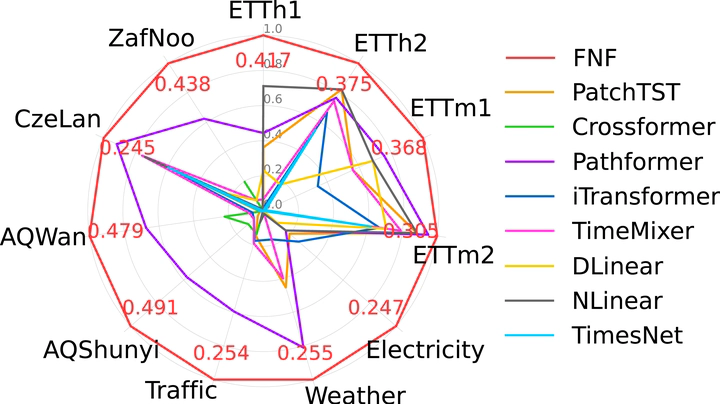
Abstract
Multivariate long-term time series forecasting has been suffering from the challenge of capturing both temporal dependencies within variables and spatial correlations across variables simultaneously. Current approaches predominantly repurpose backbones from natural language processing or computer vision (e.g., Transformers), which fail to adequately address the unique properties of time series (e.g., periodicity). The research community lacks a dedicated backbone with temporal-specific inductive biases, instead relying on domain-agnostic backbones supplemented with auxiliary techniques (e.g., signal decomposition). We introduce FNF as the backbone and DBD as the architecture to provide excellent learning capabilities and optimal learning pathways for spatio-temporal modeling, respectively. Our theoretical analysis proves that FNF unifies local time-domain and global frequency-domain information processing within a single backbone that extends naturally to spatial modeling, while information bottleneck theory demonstrates that DBD provides superior gradient flow and representation capacity compared to existing unified or sequential architectures. Our empirical evaluation across 11 public benchmark datasets spanning five domains (energy, meteorology, transportation, environment, and nature) confirms state-of-the-art performance with consistent hyperparameter settings. Notably, our approach achieves these results without any auxiliary techniques, suggesting that properly designed neural architectures can capture the inherent properties of time series, potentially transforming time series modeling in scientific and industrial applications.